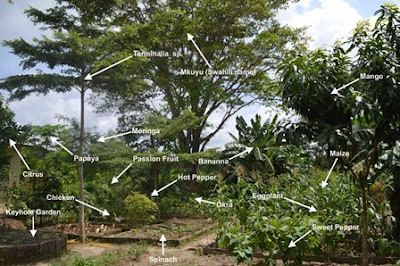PDC LESSON 2.58 DESIGN – HUGELKULTURE Part -4- HOW IT IS MADE
PERMACULTURE COURSE AGRO-ECONOMY
PDC LESSON 2.58 DESIGN – HUGELKULTURE Part -4- HOW IT IS MADE
How to make a Hugelkultur raised bed
The rising popularity of hill culture has to do with
its association with permaculture. Permaculture
is an increasingly popular gardening philosophy that aims to mimic and
integrate natural relationships and systems into the garden.
If you want to incorporate a hill
bed into your garden, you should think about the system as a whole. The beds
you build are long term and will get better over the years.
Construction of your Hugelkultur raised bed
Below are the steps to building
your Hugelkultur raised bed.
STEP 1.
Lay your scrap wood (freshly cut,
well rotted, or anything in between) with larger logs and stumps on the base
and smaller twigs and branches on top.
The bigger the better. The larger
your mound, the more resilient it will be to watering and fertilizing. The
recommended size is about two by one meter with a height of about two meters.
While you don't need to make your hillock that big, it is recommended as it may
shrink in the first month as it settles down.
STEP 2.
Fill in the gaps in the wood with
compost, manure, leaves, kitchen scraps, etc. This nitrogen-rich layer helps
balance high levels of carbon in the wood. It is also highly recommended to
cover your mound face down with cut sod (always make sure the grass is face
down as the grass can grow back through if it is face up).
STEP 3.
Finish with a layer of topsoil
about 5 inches deep and then a layer of mulch (like straw).
STEP 4.
You can plant immediately in the
Hugelkultur raised bed, but leaving it a bit (like over the winter) gives it
time to settle and soak rainwater. However, if you do not want to wait and
immediately plant in the mound, then do no harm.
Annotation:
You can start with smaller/lower
beds and add them up over a few years to create a taller bed. However, the
smaller beds aren't as resilient and will require some watering (though far
less than a "regular" raised bed containing just soil and compost)



Comments
Post a Comment